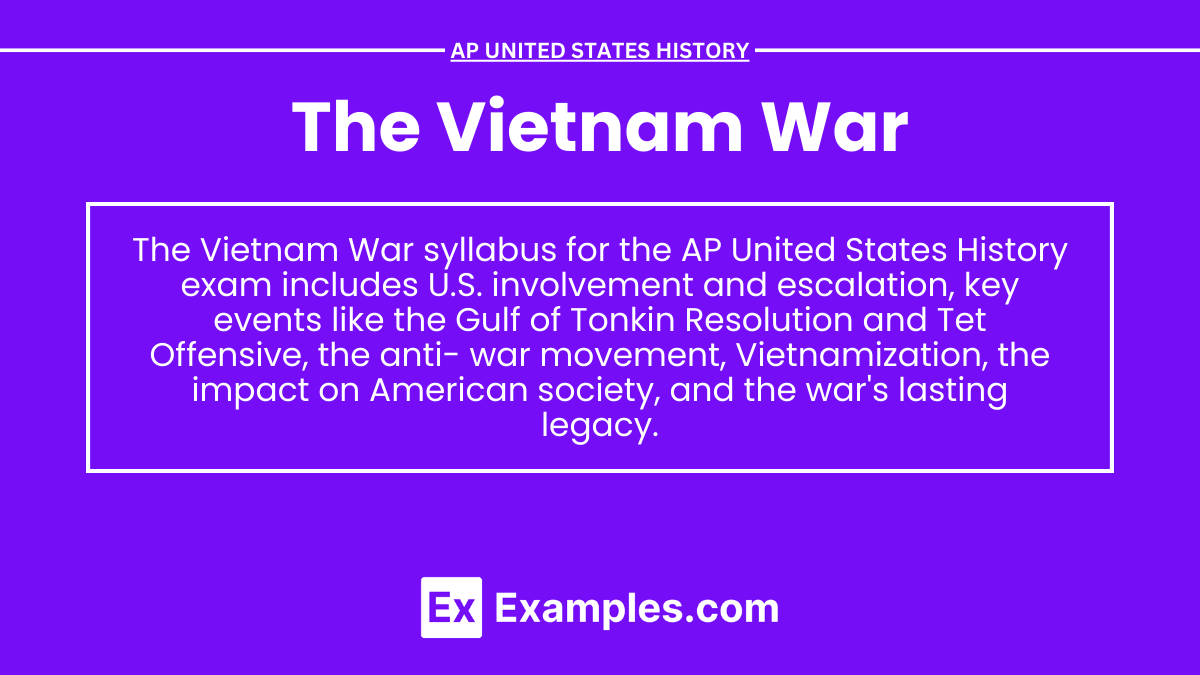In AP United States History, the Vietnam War is studied as a significant and controversial conflict that shaped U.S. foreign and domestic policies during the Cold War era. The war, fought between communist North Vietnam and non-communist South Vietnam, with extensive U.S. involvement, highlighted the complexities of the global struggle against communism. It also sparked widespread anti- war movements, deeply divided American society, and led to significant changes in U.S. military and foreign policy, including the eventual withdrawal of American troops and the fall of Saigon.
Learning Objectives
In AP United States History, you will be expected to understand the causes, key events, and consequences of the Vietnam War, including the Gulf of Tonkin Resolution, the Tet Offensive, and the anti-war movement. The impact of U.S. military strategies, such as Vietnamization, on both the war’s outcome and American society will be analyzed. You will examine the effects of the war on U.S. foreign policy, including the limitations imposed by the War Powers Act and the long-term legacy of the conflict.
Key Events and Concepts
Origins of the Conflict
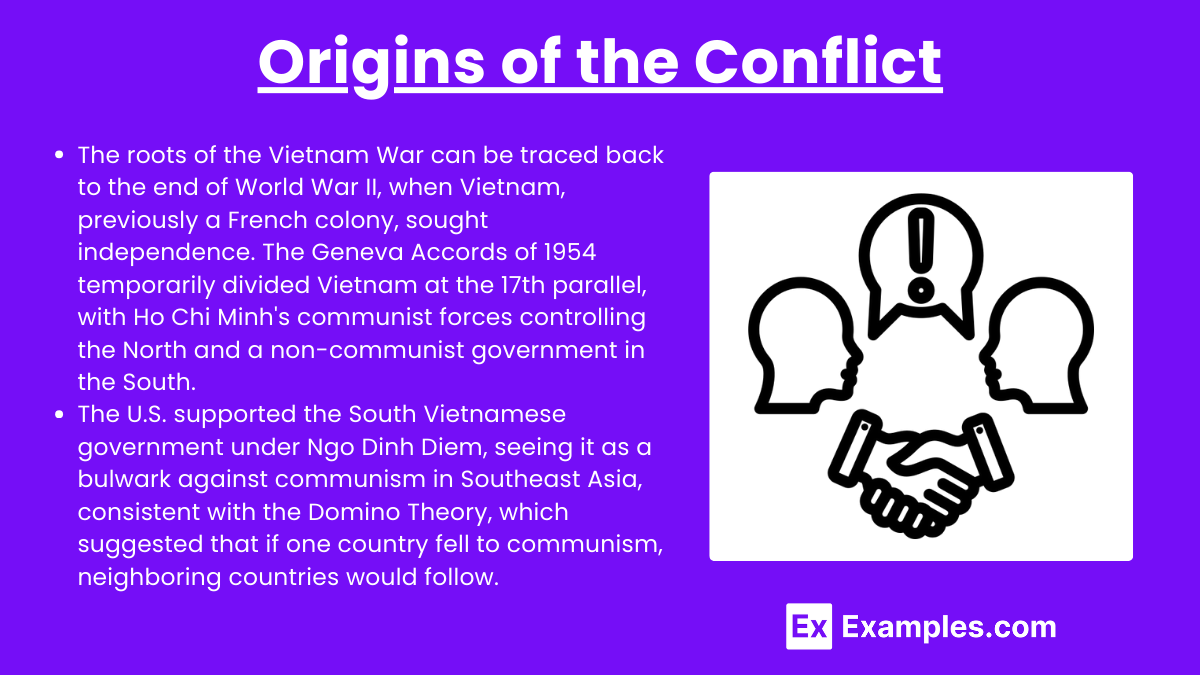
- The roots of the Vietnam War can be traced back to the end of World War II, when Vietnam, previously a French colony, sought independence. The Geneva Accords of 1954 temporarily divided Vietnam at the 17th parallel, with Ho Chi Minh’s communist forces controlling the North and a non-communist government in the South.
- The U.S. supported the South Vietnamese government under Ngo Dinh Diem, seeing it as a bulwark against communism in Southeast Asia, consistent with the Domino Theory, which suggested that if one country fell to communism, neighboring countries would follow.
U.S. Escalation
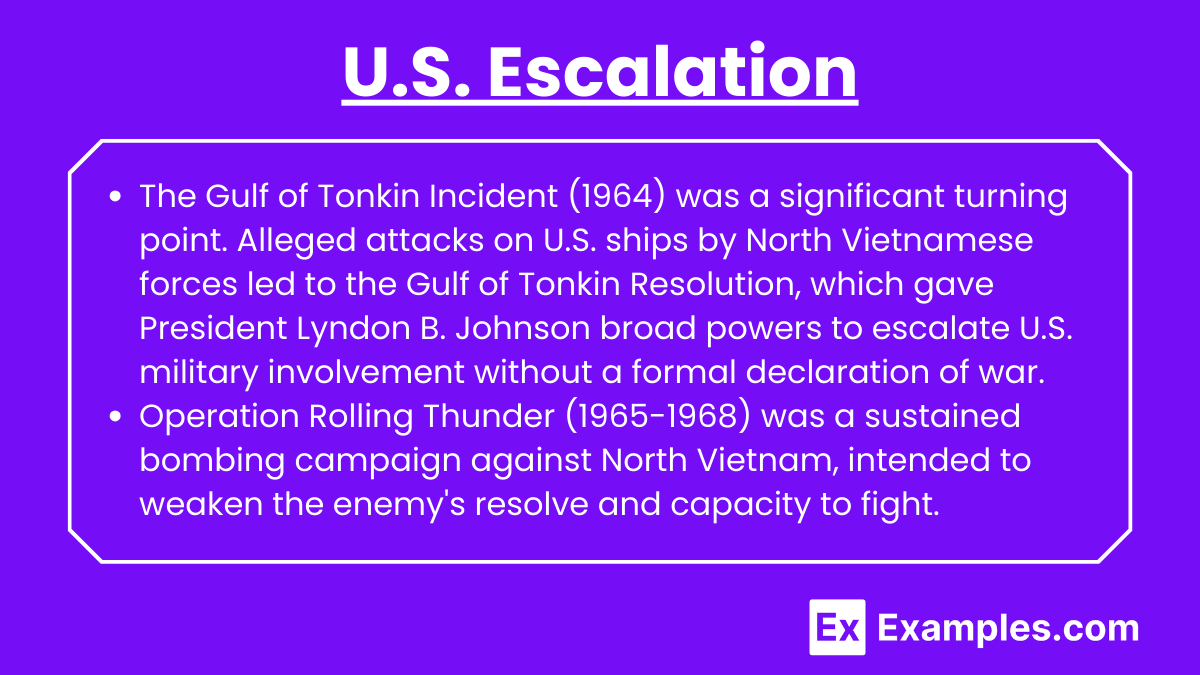
- The Gulf of Tonkin Incident (1964) was a significant turning point. Alleged attacks on U.S. ships by North Vietnamese forces led to the Gulf of Tonkin Resolution, which gave President Lyndon B. Johnson broad powers to escalate U.S. military involvement without a formal declaration of war.
- Operation Rolling Thunder (1965-1968) was a sustained bombing campaign against North Vietnam, intended to weaken the enemy’s resolve and capacity to fight.
The Tet Offensive (1968)
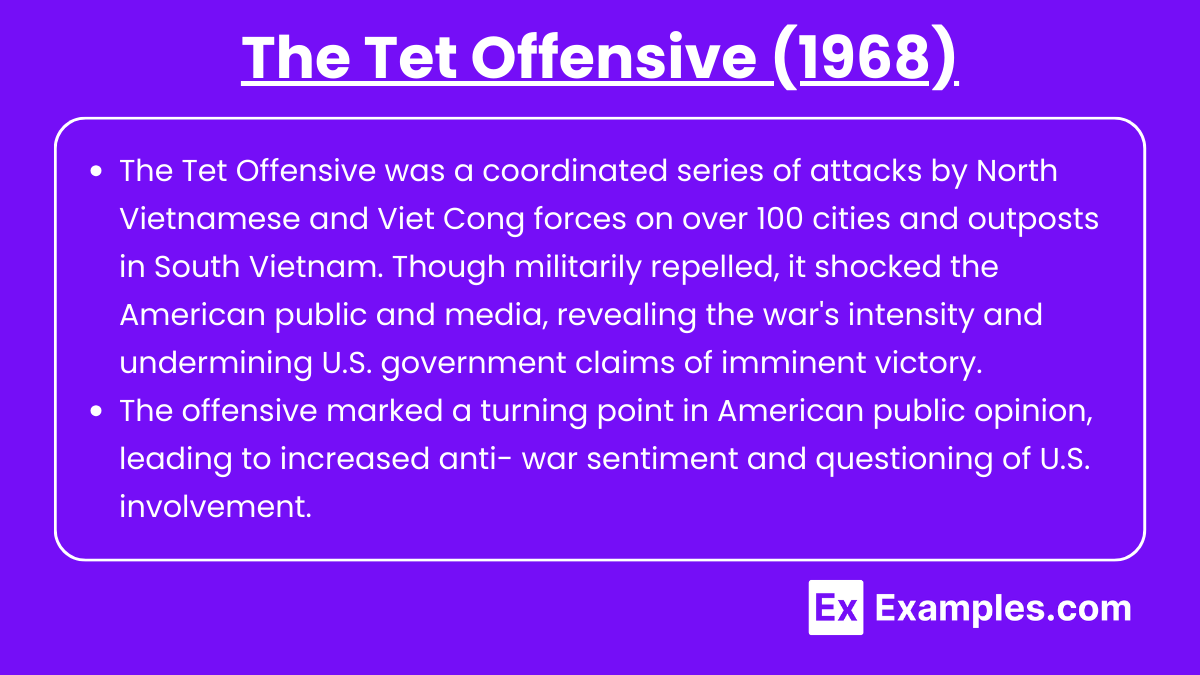
- The Tet Offensive was a coordinated series of attacks by North Vietnamese and Viet Cong forces on over 100 cities and outposts in South Vietnam. Though militarily repelled, it shocked the American public and media, revealing the war’s intensity and undermining U.S. government claims of imminent victory.
- The offensive marked a turning point in American public opinion, leading to increased anti-war sentiment and questioning of U.S. involvement.
Anti-War Movement

- The Vietnam War sparked a massive anti-war movement in the U.S., with protests on college campuses, large demonstrations in major cities, and cultural opposition expressed through music, art, and literature.
- The 1968 Democratic National Convention in Chicago became a flashpoint for anti-war protests, leading to violent clashes between demonstrators and police, further dividing the nation.
Vietnamization and U.S. Withdrawal

- President Richard Nixon introduced the policy of Vietnamization, aiming to gradually withdraw U.S. troops while transferring the responsibility of fighting the war to the South Vietnamese forces.
- The Paris Peace Accords (1973) led to the withdrawal of U.S. combat troops, but the fighting continued until the fall of Saigon in 1975, when North Vietnamese forces captured the city, marking the end of the war with a communist victory.
Impact and Legacy
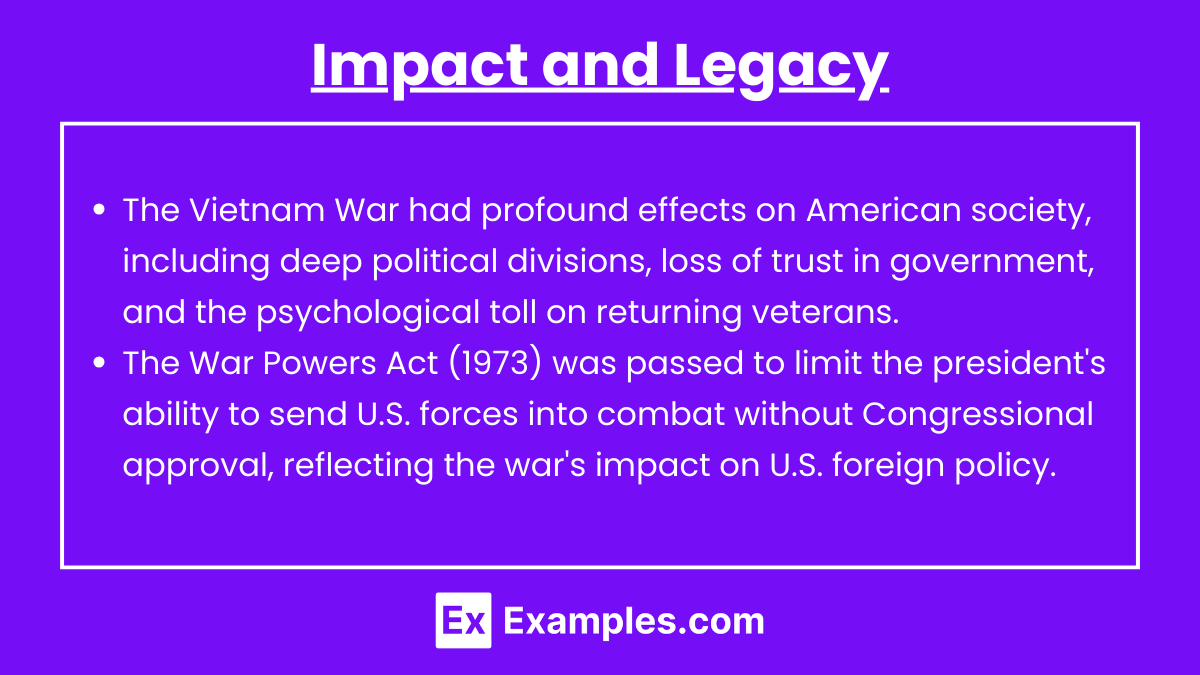
- The Vietnam War had profound effects on American society, including deep political divisions, loss of trust in government, and the psychological toll on returning veterans.
- The War Powers Act (1973) was passed to limit the president’s ability to send U.S. forces into combat without Congressional approval, reflecting the war’s impact on U.S. foreign policy.
Examples:
Example 1: Gulf of Tonkin Resolution
The Gulf of Tonkin Resolution authorized the escalation of U.S. military involvement in Vietnam, marking the start of large-scale American intervention.
Example 2: Tet Offensive
The Tet Offensive exposed the harsh realities of the Vietnam War, leading to a significant shift in U.S. public opinion and growing anti-war sentiment.
Example 3: My Lai Massacre
The My Lai Massacre in 1968, where U.S. soldiers killed hundreds of unarmed Vietnamese civilians, fueled anti-war protests and raised ethical questions about the conduct of the war.
Example 4: Vietnamization
Nixon’s Vietnamization policy aimed to reduce U.S. involvement by empowering South Vietnamese forces, but it ultimately failed to prevent the fall of Saigon.
Example 5: The Fall of Saigon
The fall of Saigon in 1975 marked the official end of the Vietnam War, with North Vietnam’s victory and the unification of Vietnam under communist control.
MCQs:
1. What was the significance of the Gulf of Tonkin Resolution?
- A) It ended the Vietnam War.
- B) It provided economic aid to Vietnam.
- C) It authorized U.S. military escalation in Vietnam.
- D) It established diplomatic relations with North Vietnam.
Explanation: The Gulf of Tonkin Resolution gave President Lyndon B. Johnson the authority to use military force in Vietnam without a formal declaration of war, leading to a significant escalation of U.S. involvement.
2. Which event marked a turning point in U.S. public opinion against the Vietnam War?
- A) Gulf of Tonkin Incident
- B) Tet Offensive
- C) Paris Peace Accords
- D) Operation Rolling Thunder
Explanation: The Tet Offensive, despite being a military failure for North Vietnam, revealed the intensity of the conflict and led to widespread public disillusionment with the war, marking a significant shift in U.S. opinion.
3. What was the primary goal of President Nixon’s Vietnamization policy?
- A) To increase U.S. troop deployment in Vietnam
- B) To achieve a quick military victory
- C) To transfer combat responsibilities to South Vietnamese forces
- D) To negotiate a ceasefire with North Vietnam
Explanation: Vietnamization aimed to gradually reduce U.S. military involvement by training and equipping South Vietnamese forces to take over the fighting, allowing U.S. troops to withdraw.

